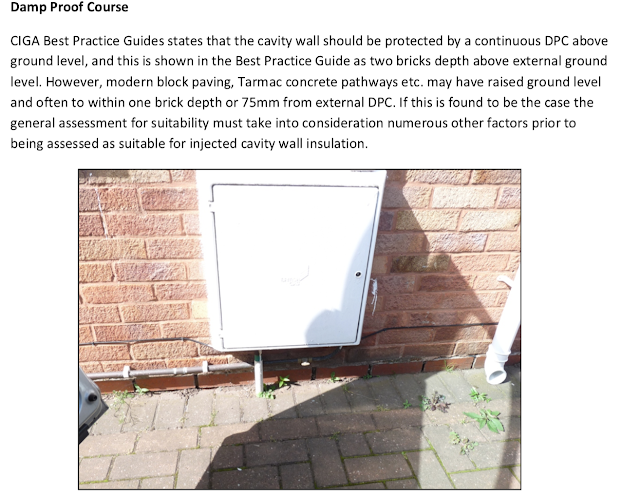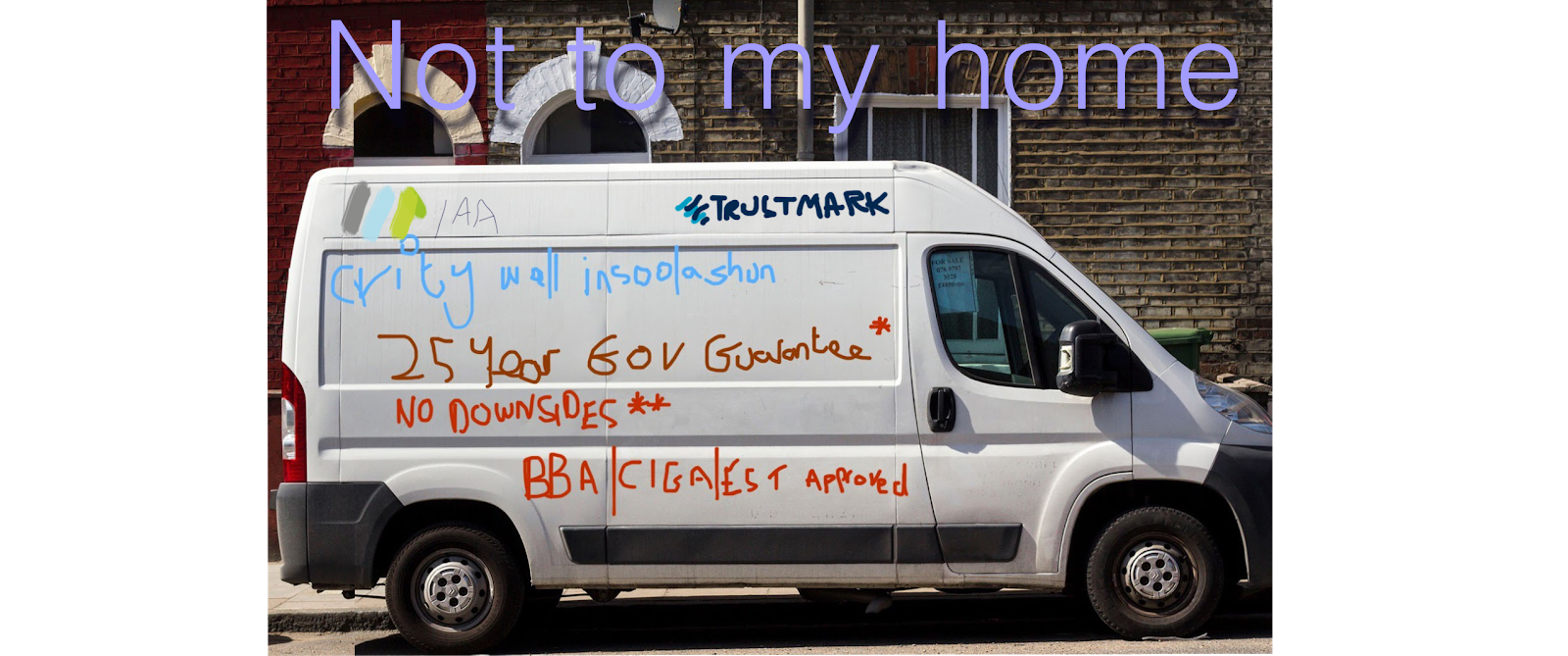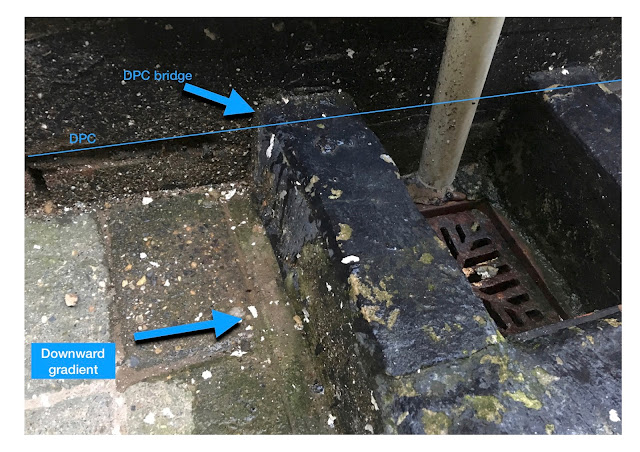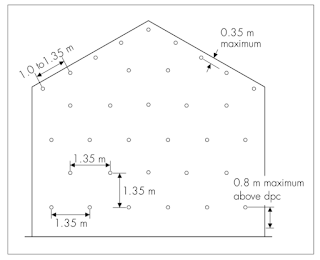Discrepancies between Internal and external DPC (damp proof course)

In a cavity wall construction, one would expect that the damp proof membrane to be at the same level on both walls. It turns out this is not always the case and my house is a good example where the internal wall's DPC is more than a brick lower than the external wall DPC. I didn't even think to check this before reading the CIGA Technical note 14 . This clearly states that if the distance between DPC and ground level is within a brick (as was the case with my property at time of install) then 'numerous other factors' must be assessed before declaring the dwelling as being suitable for CWI. CIGA Technical note 14 . One of the factors is the relative level of the inner and outer leaf DPC. This is exactly what I found in my property. Ive used a floorboard to show the position of the internal floor. The DPC is clearly a brick below the floorboard and less than brick above the block paving. External leaf DPC is 1 brick below the floor level.


